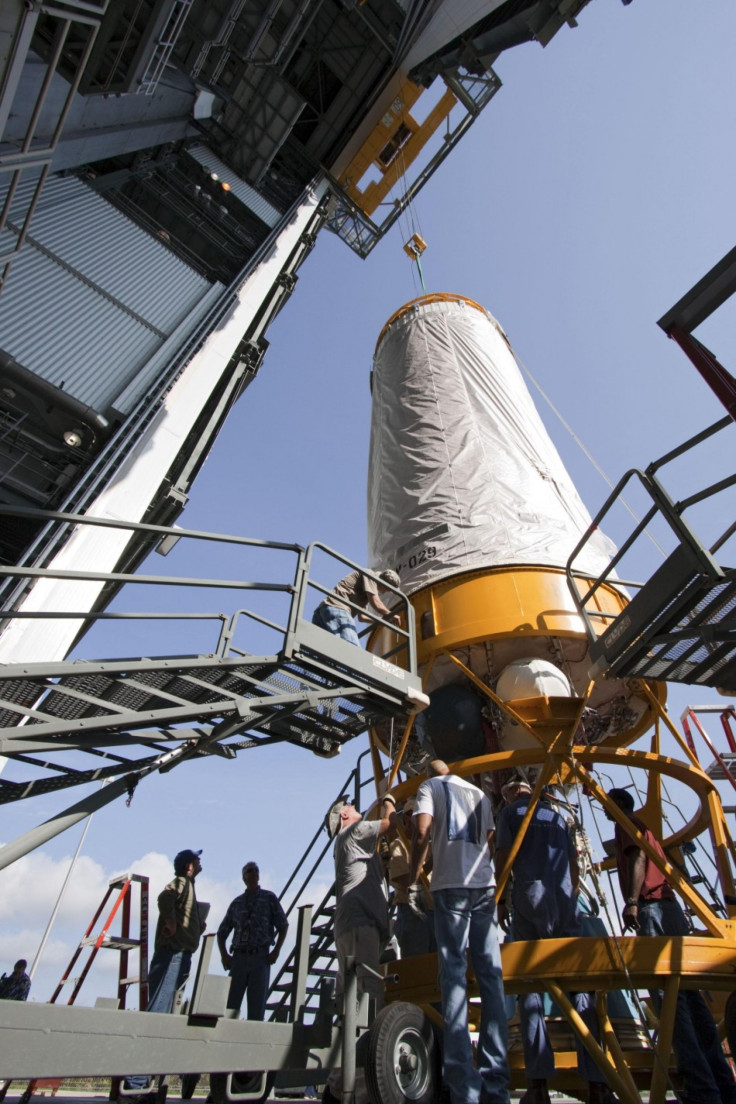NASA?s Probe to Jupiter may Unlock Clues about Earth?s Origins

Sure, the shuttle program may have ended earlier this month, but scientists in Florida are still hard at work. A NASA satellite was lifted aboard an unmanned Atlas 5 rocket at Cape Canaveral Air Force Station Wednesday in preparation for a launch next week on an unprecedented mission to the heart of Jupiter.
It's a commonly held belief amongst scientists that Jupiter was the first planet to form after the birth of the sun. Unlocking the clues to how Jupiter formed could give valuable hints as to the origins of our own planet.
"Jupiter holds a lot of key secrets about how we formed," says lead scientist Scott Bolton, with the Southwest Research Institute in San Antonio, Texas.
One key piece of missing data that scientists hope to find is how much water is inside the massive planet that circles the sun five times further away than earth.
A robotic probe, called Juno, is scheduled to spend a year cycling inside Jupiter's deadly radiation belts to determine precisely how much water the planet holds, what triggers its vast magnetic fields, and whether a solid core lies beneath its dense, hot atmosphere.
The probe is scheduled to go far closer than any previous orbiting spacecraft has ever gone.
Juno, built by Lockheed Martin Astronautics of Denver, Colorado, is scheduled to launch on August 5. The "most powerful Atlas rocket ever made" is now sitting on the launchpad at Cape Canaveral Air Force Station while technicians carry out "a final flurry of checks and tests" to see if all is well.
Its journey will take five years, and upon arrival in July 2016, it will thread itself into a narrow region between the planet and the inner edge of its radiation belt. Then, the solar-powered probe will spend a year orbiting over Jupiter's poles.
Key Goals of the Juno Mission:
- Determine how much water is in Jupiter's atmosphere to help determine which planet formation theory is correct (or if new theories are needed).
- Look deep into Jupiter's atmosphere to measure composition, temperature, cloud motions and other properties.
- Map Jupiter's magnetic and gravity fields, revealing the planet's deep structure.
- Explore and study Jupiter's magnetosphere near the planet's poles, especially the auroras - Jupiter's northern and southern lights - providing new insights about how the planet's enormous magnetic force field affects its atmosphere.
Like the sun, Jupiter is comprised primarily of hydrogen and helium mixed with a few other elements like oxygen. Scientists believe the oxygen is bound with hydrogen to form water, which can be measured by microwave sounders, one of eight science instruments on Juno.
How Jupiter formed is at the heart of the debate.
Jupiter's water content is directly tied to this, and some evidence points to a planet that grew in the cold nether-regions of the solar system and later migrated inward. Other models show Jupiter forming at or around its present location by accumulating ancient icy snowballs.
Whichever way it happened, Jupiter formed into a mass more than double the size of all its sister planets combined, with the gravitational muscle to hang on to almost all of its original building materials.
On Juno's upcoming mission, its electronic heart will protected in a vault of titanium, but it will fall into the harsh Jovian radiation environment after about a year.
Juno's final dramatic move will be a dive directly into the planet's atmosphere to avoid any chance of contaminating Jupiter's potentially life-bearing moons.
The mission, the second in NASA's lower-cost, quick-turnaround New Frontiers planetary expeditions, will cost $1.1 billion.
© Copyright IBTimes 2024. All rights reserved.






















